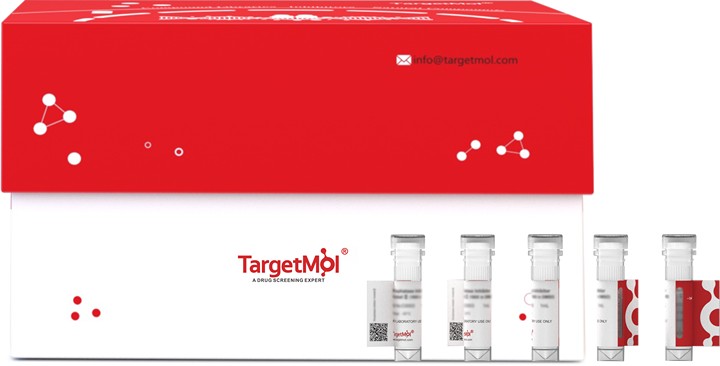购物车
- 全部删除
 您的购物车当前为空
您的购物车当前为空

Bovine viral diarrhea virus (strain SD-1) Genome polyprotein (E. coli, His) is expressed in E. coli expression system with N-10xHis tag. The predicted molecular weight is 25.0 kDa and the accession number is Q01499.

| 规格 | 价格 | 库存 | 数量 |
|---|---|---|---|
| 20 μg | ¥ 2,290 | 20日内发货 | |
| 100 μg | ¥ 4,750 | 20日内发货 | |
| 1 mg | ¥ 16,000 | 20日内发货 |
| 生物活性 | Activity has not been tested. It is theoretically active, but we cannot guarantee it. If you require protein activity, we recommend choosing the eukaryotic expression version first. |
| 产品描述 | Bovine viral diarrhea virus (strain SD-1) Genome polyprotein (E. coli, His) is expressed in E. coli expression system with N-10xHis tag. The predicted molecular weight is 25.0 kDa and the accession number is Q01499. |
| 种属 | BVDV |
| 表达系统 | E. coli |
| 标签 | N-10xHis |
| 蛋白编号 | Q01499 |
| 别名 | Genome polyprotein |
| 氨基酸序列 | MELITNELLYKTYKQKPVGVEEPVYDQAGNPLFGERGAIHPQSTLKLPHKRGERNVPTSLASLPKRGDCRSGNSKGPVSGIYLKPGPLFYQDYKGPVYHRAPLELFEEGSMCETTKRIGRVTGSDGKLYHIYICIDGCITVKSATRSHQRVLRWVHNRLDCPLWVTSC |
| 蛋白构建 | 1-168 aa |
| 蛋白纯度 | > 85% as determined by SDS-PAGE. |
| 分子量 | 25.0 kDa (predicted) |
| 内毒素 | < 1.0 EU/μg of the protein as determined by the LAL method. |
| 缓冲液 | Tris-based buffer, 50% glycerol |
| 复溶方法 | A Certificate of Analysis (CoA) containing reconstitution instructions is included with the products. Please refer to the CoA for detailed information. |
| 存储 | Lyophilized powders can be stably stored for over 12 months, while liquid products can be stored for 6-12 months at -80°C. For reconstituted protein solutions, the solution can be stored at -20°C to -80°C for at least 3 months. Please avoid multiple freeze-thaw cycles and store products in aliquots. |
| 运输方式 | In general, Lyophilized powders are shipping with blue ice. Solutions are shipping with dry ice. |
| 研究背景 | Leader cysteine autoprotease that cleaves itself from the nascent polyprotein during translation of the viral mRNA. Once released, plays a role in the inhibition of host innate immune response by interacting with host IRF3 and inducing its proteasomal degradation.; Packages viral RNA to form a viral nucleocapsid and thereby protects viral RNA. Plays also a role in transcription regulation. Protects the incoming virus against IFN-induced effectors.; Initial binding to target cell probably involves interaction of E(rns) with glycosaminoglycans.; E1 and/or E2 are probably responsible of cell attachment with CD46 and subsequent fusion after internalization of the virion by endocytosis.; E1 and/or E2 are probably responsible of cell attachment with CD46 and subsequent fusion after internalization of the virion by endocytosis.; Plays an essential role in the virus replication cycle by acting as a viroporin. Forms ion conductive pores, which alters the cell permeability allowing the transport of ions and other small molecules. Forms a leader sequence to properly orient NS2 in the membrane.; Uncleaved NS2-3 is required for production of infectious virus.; Plays a role in the regulation of viral RNA replication.; Multifunctional protein that contains an N-terminal protease and a C-terminal helicase, playing essential roles in viral polyprotein processing and viral genome replication. The chymotrypsin-like serine protease activity utilizes NS4A as an essential cofactor and catalyzes the cleavage of the polyprotein leading to the release of NS4A, NS4B, NS5A, and NS5B. Interacts with NS5B to enhance RNA-dependent RNA polymerase activity.; Acts as a cofactor for the NS3 protease activity.; Induces a specific membrane alteration that serves as a scaffold for the virus replication complex.; Replicates the viral (+) and (-) genome. |